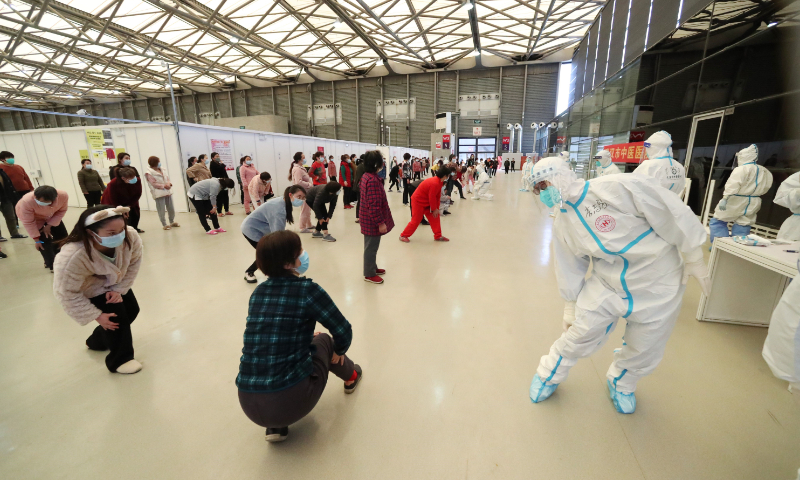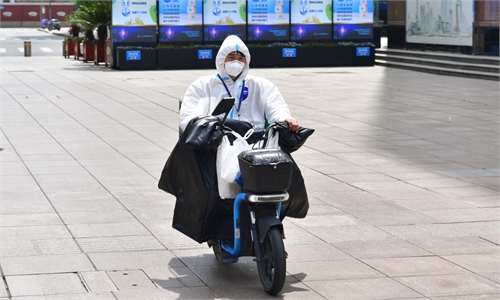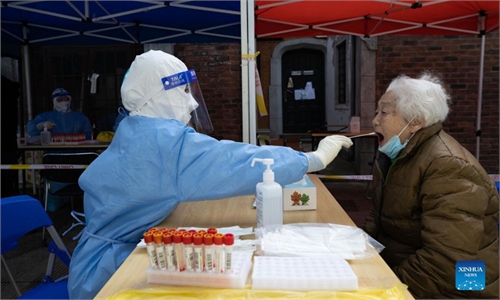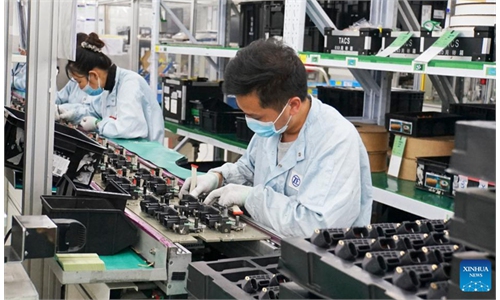
Li Zhiqiang leads patients in a temporary hospital in Shanghai to relax their bodies and minds. Photo: Courtesy of Li Zhiqiang
Newly found positive infections remained high but relatively stable overall in Shanghai with the proportion of people with COVID-19 in at-risk groups declining in the city, local officials announced on Sunday.
There are currently 16 patients in severe condition in Shanghai. Of those patients who are receiving medical treatment, the youngest is 33 years old and the rest are aged above 70. It is noteworthy that among the 16 patients, only one was fully vaccinated and none of the rest had a complete inoculation due to severe underlying medical conditions, the Shanghai health authorities said at a press conference on Sunday.
However, up to now there has not been a critical patient in the provisional hospital set up at the Shanghai New International Expo Center in the Pudong New Area of Shanghai. The facility was taken over by the medical team of Zhongnan Hospital of Wuhan University.
In an exclusive interview with the Global Times, Li Zhiqiang, leader of the medical aid team, revealed that this is not only related to the characteristics of the Omicron variant, but also attributed to the early medical intervention.
During the epidemic in Wuhan in early 2020, Li, an "anti-epidemic veteran," served as the vice president of a temporary hospital in Wuhan, leading his team to achieve zero deaths, zero infections of medical staff, and zero recurrences of cured patients.
Compared with Wuhan, Li admitted that the fight against COVID-19 in Shanghai is a new situation with many new challenges.
Consisting of 51 medical staff, Li's team arrived at the medical facilities at the Shanghai Expo on April 6 and are responsible for caring more than 1,300 asymptomatic and mild cases.
"Although this time we are faced with asymptomatic and mild cases in Shanghai's provisional hospital, it does not mean that the treatment task will be easier than that in Wuhan," Li said.
Li explained that in 2020, the provisional hospital in Wuhan where he worked had a capacity of 1,500 beds and received support from eight medical teams across the nation. The hospital treated a total of 1,760 patients, the largest number in temporary hospitals in Wuhan.
However, the provisional hospital in Shanghai covers 300,000 square meters with 15,000 beds.
"Compared with the provisional hospitals in Wuhan, the scale of the facilities in Shanghai is obviously larger and many of them can hold tens of thousands of people in centralized isolation at the same time. Such a large area of temporary hospitals has severe challenges for the management, care and treatment of patients," Li said.
A very important task for Li's team is to identify the changes in the patient's condition and transfer those with serious underlying diseases, or whose condition is in risk of turning from mild to severe, to designated hospitals to provide them with more effective treatment.
On April 12, nearly 500 patients were released, only six days after Li's medical team took over the temporary hospital.
"An infected patient will gradually turn negative five to seven days after entering the provisional hospital and can go home when meeting the discharge criteria or medical observation. This standards and process are very clear," Li said.
Shanghai's new daily tally remained high with 3,238 confirmed cases and 21,582 asymptomatic infections registered on Saturday. However, since 1,177 confirmed cases were previously reported as asymptomatic infections, the actual number of newly confirmed cases was 2,061, according to the local health authority.




